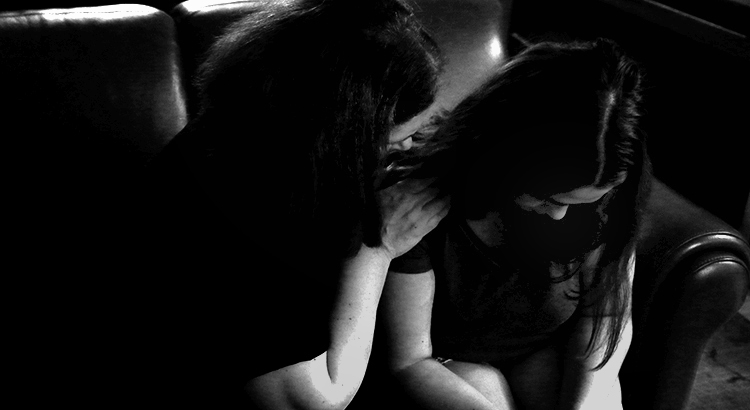By Wallicia Gill and Brad Swanson:
Part II of a three-part special report on teen sex trafficking in northern Virginia. Part I gave background on the problem. Read it here.
Janet B. has lived through a nightmare that no parent who has not experienced it can imagine: her teenage daughter Sophie (the family’s names have been changed) was trapped into a sex trafficking ring for nine months.
Sophie was a 15-year-old rising freshman at a Fairfax County public high school, with an outgoing, bubbly personality, plenty of friends and good grades. She had never been a troubled child. She had three younger siblings, two boys and a girl. Both Janet and her husband, Jim, had steady, satisfying jobs – she in human resources and he in information technology. The family, says Janet, was harmonious.
To this day, six years later, Janet cannot point to a conclusive danger signal that her oldest child was falling into a vicious trap. Everything appeared normal. Nothing about Sophie’s new friendship with a boy about her same age, formed after a chance meeting at a shopping mall, seemed unusual. Yes, she seemed to be spending a lot of time with him, and communicating with him on text and social media very often, but it was just a friendship, not a serious relationship.
 But in fact the boy was a scout for a gang involved in sex trafficking. Slowly, over several months, he gained Sophie’s confidence. One day after school the gang sprang the trap. Sophie was lured to a secluded corner of the school grounds and gang-raped by five persons. The rape was video-taped and Sophie was warned that if she came forward the tape would be publicly released.
But in fact the boy was a scout for a gang involved in sex trafficking. Slowly, over several months, he gained Sophie’s confidence. One day after school the gang sprang the trap. Sophie was lured to a secluded corner of the school grounds and gang-raped by five persons. The rape was video-taped and Sophie was warned that if she came forward the tape would be publicly released.
From that moment on, Sophie’s life was ruled by her new role as a sex trafficking victim. She continued to go to school, and to sleep in her own bed at night. But very often after school – when Janet thought she was with friends or at the mall or a school club – she was taken to a nearby house and forced to provide sex for her captors’ profit.
Sophie’s controllers took pains to keep her in line. They gave her a mobile phone so that Janet and Jim could not track her calls. They watched Sophie’s house and visited when the parents were away to threaten harm to her siblings if she tried to escape. They gave her drugs to disorient her. They told her that no one – especially her parents – cared about her. They drove her self-esteem to zero, as that made her easier to manipulate.
Janet noticed Sophie becoming withdrawn and falling behind in school. She and Jim tried to talk to her but she was uncommunicative. They monitored her social media and questioned her friends and their parents but no one could explain the behavior. They concluded that Sophie was going through a typical teen period of uncertainty and rebelliousness. They had a gut feeling that something was wrong, but nothing tangible to justify it.
And then Sophie was kidnapped – for the first time. She was held for four days while her parents frantically searched for her and finally found her, locked in the closet of a trafficking safe house, through a girlfriend of a gang member.
The police treated the case as a runaway. Janet knew otherwise. But while she tried to watch over Sophie more closely, she also wanted her daughter to resume a normal life, not remain a prisoner in her own house. And then the second kidnapping occurred – this time for 10 days, finally ended by action of an undercover agent of a police task force aimed at gang activity. The gang had been preparing to sell Sophie for $2,000 to another organized ring in another state.
Janet and Jim knew they had to move away. With the aid of police, they found a new home, and new schools for their younger children. Sophie entered rehabilitation therapy. After three years of residential care she was released into the care of her parents. She has a high school diploma and is studying to become a veterinarian. Janet and Jim continue in their careers and the younger children are doing well in school.
Sophie escaped, but the damage is lasting, says Janet. The extroverted girl who never met a stranger has been replaced by a more cautious young woman whose self-confidence and self-esteem need constant cultivating. Each member of the family has been scarred by the tragedy.
Janet is deeply grateful that she and Jim could afford the lengthy therapy that allowed Sophie to put her life back together. She can only imagine the depth of pain that families must undergo who do not have the financial resources, and the emotional stability, of her own.
Janet searches for a message to deliver to parents of teenagers to ensure they and their children do not suffer the same horror. She reflects that all she had to go on was a gut feeling that something was amiss.
Sometimes that is all there is.
Coming soon: Part III– Fighting back against trafficking
If you or someone you know is a victim of trafficking, call the National Human Trafficking Hotline at 1-888-373 7888. If danger is imminent, call 911.

Dr. Wallicia Gill is a retired middle school principal, and adjunct professor at Shenandoah University.

.
Brad Swanson is the editor of The Blue View. He is an international investment manager and previously worked as a diplomat and journalist


Dear Dr. Gill and Mr. Swanson,
Thank you so much for this very important article on Human Trafficking that is happening right here in our community.
What type of awareness programs are being practiced in our middle and high schools in Fairfax County? Also, are there any programs to educate community activists or faith based organizations about these horrific acts impacting our girls?
Thank you for your comment. We are researching measures being taken in our communities to fight back against trafficking for part III of the special report. If any reader has information or suggestions, they should feel free to post them here or email us at newsletter@fairfaxdemocrats.org— The Blue View
This topic is not discussed enough. It should be talked about at schools, churches, girl scout meetings, HOA meetings, and any and all community events. Neighborhoods should even be passing out information about this at yard sales. Just like this area is having heart attacks over the rise in Heroin, so should we be alarmed and ready to fight this sex trafficking issue. Training for young women and men should be offered so that they know what to look for, and how to get out of an (almost) situation. The more people aware of this the more chances of helping someone to stay clear and free of it.